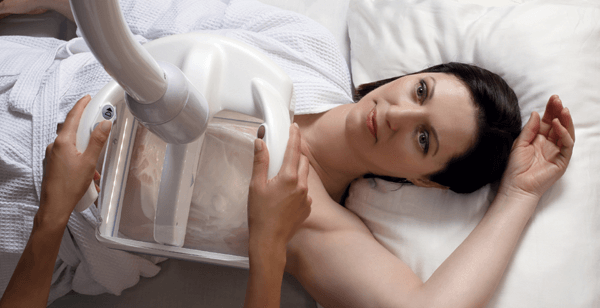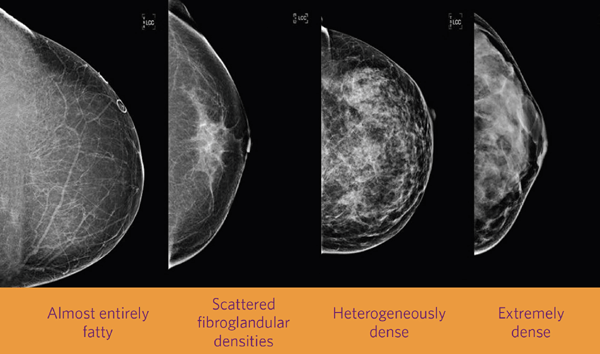All breasts are not the same
Early detection of breast cancer with Invenia ABUS can saves lives
About 40% of women have dense breast tissue. And for these women, mammograms alone may not be enough to find breast cancer.
All breasts are not the same. Some are fatty, some are dense, and some are a mix.

Breast Density — What does it mean?
Breasts are made of fat and breast tissue. Some women have more fat than breast tissue while others have more breast tissue than fat. When there is more breast tissue the breast is considered dense. On a mammogram dense tissue looks white. Since masses or lumps also appear white on a mammogram, a suspicious lump may be masked by the dense breast tissue.
Dense breast tissue is also linked with an increase in the risk of developing breast cancer. Women with extremely dense breast tissue have a 4 to 6 times greater risk of developing breast cancer than women who do not have dense breast tissue.1 Invenia ABUS helps physicians look differently at dense breast tissue.
Breast density is determined by the radiologist who reads your mammogram and classifies the density into one of four categories. Your doctor will tell you if you have dense breasts based on your mammogram’s classification on the density scale.
1 Boyd et al, New England Journal of Medicine 2007;356:227-36 “Women with dense tissue in 75% or more of the breast have a risk of breast cancer four to six times as great as the risk among women with little or no dense tissue.”
Look differently
Invenia™ ABUS — the only breast cancer screening technology FDA-approved* for detection in women with dense breast tissue
Should I have an Invenia ABUS screening exam?
Available at McLaren, Invenia ABUS breast cancer screening is specifically developed to help doctors find cancers hidden in dense breast tissue, which may be missed by mammography.
If you have dense breast tissue, like 40% of women in the U.S., the addition of ABUS (Automated Breast Ultrasound) screening can increase the detection of cancers. Invenia ABUS screening along with your screening mammogram will help provide a clear evaluation of your dense breast tissue.

The Invenia ABUS screening experience.
From the moment you lie down on the exam table, you’ll realize that Invenia ABUS screening is completely unlike a mammogram. A layer of lotion is applied to your breast, and then a scanner is firmly positioned on your breast to acquire the images. The exam takes approximately 15 minutes and provides your doctor with clear 3D ultrasound images. The physician will review the ABUS screening images along with your mammogram.
How the Invenia ABUS exam is different
Unlike 2D or 3D mammography, which uses radiation, Invenia ABUS screening uses sound waves to create 3D pictures of the breast tissue. Invenia ABUS is the only FDA-approved system for breast cancer screening when used in combination with mammography in women who have dense breast tissue and no prior interventions.
Ask your doctor if an Invenia ABUS screening would benefit you.
*FDA PMA P110006